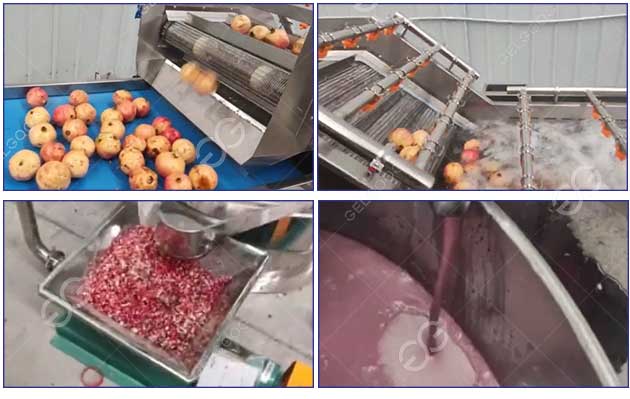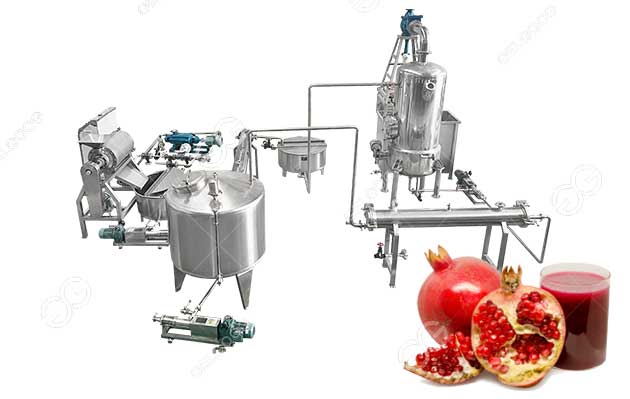Description
Pomegranate juice, with its vibrant color and health benefits, has gained immense popularity in recent years. Whether enjoyed as a refreshing beverage or used as a versatile ingredient in culinary creations, the demand for high-quality pomegranate juice continues to grow. To meet this demand efficiently, the pomegranate juice processing plant plays a pivotal role in ensuring a consistent supply of this delightful elixir.
Pomegranate Juice Production Process:
pomegranate → cleaning → peeling → screening → juice pressing → filtering → degassing → sterilization → filling
Pomegranate Juice Processing Plant Details:
Sourcing Quality Pomegranates: The foundation of a successful pomegranate juice processing plant is sourcing top-quality pomegranates. Producers must select fruit that is ripe, fresh, and free from defects. Pomegranates with deep color, heavy for their size, and free from blemishes are ideal for juice production.
Washing: The pomegranates go through a rigorous washing and sorting process. This step involves cleaning the fruits to remove dirt and contaminants and sorting them to discard any damaged or low-quality pomegranates.

Peeling: Peeling can remove the epidermis and internal sepals of pomegranate juice, prevent astringent taste during juice pressing, and affect the taste of pomegranate juice.
Vibration separator: The upper vibration to remove white pomegranate peel, and out of both sides of the upper layer, the lower vibration discharge pomegranate.
Juice process: The heart of the processing plant is the juice extraction process. There are several methods available, but the most common ones include hydraulic presses and mechanical extraction machines. Hydraulic presses apply pressure to the pomegranates, squeezing out the juice, while mechanical extractors use rotating blades to separate the arils (the juicy seeds) from the peel and membranes. The choice of method often depends on the scale of production and desired juice quality.
Filting: Filter meat inside of juice out.
Degassing: Degassing is to remove the air inside Pomegranate juice, and remove the gas by reducing the pressure of the material, so as to ensure the purity and stability of Pomegranate juice, thus improving the flavor and extending the shelf life.
Pasteurization: To ensure the safety of the pomegranate juice and extend its shelf life, pasteurization is crucial. Heat treatment is applied to the juice to kill harmful microorganisms while preserving its flavor and nutritional value.
The pomegranate juice processing plant is a complex yet essential process that transforms ripe pomegranates into a market-ready product. Ensuring the quality of the fruit, efficient extraction, pasteurization, and careful packaging are key steps in producing a premium pomegranate juice that meets consumer demands. As the popularity of pomegranate juice continues to rise, mastering the processing plant’s intricacies becomes increasingly important for producers aiming to satisfy the thirst for this delicious and nutritious beverage.

Reviews
There are no reviews yet.